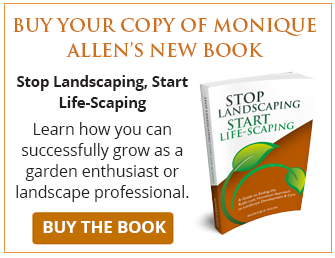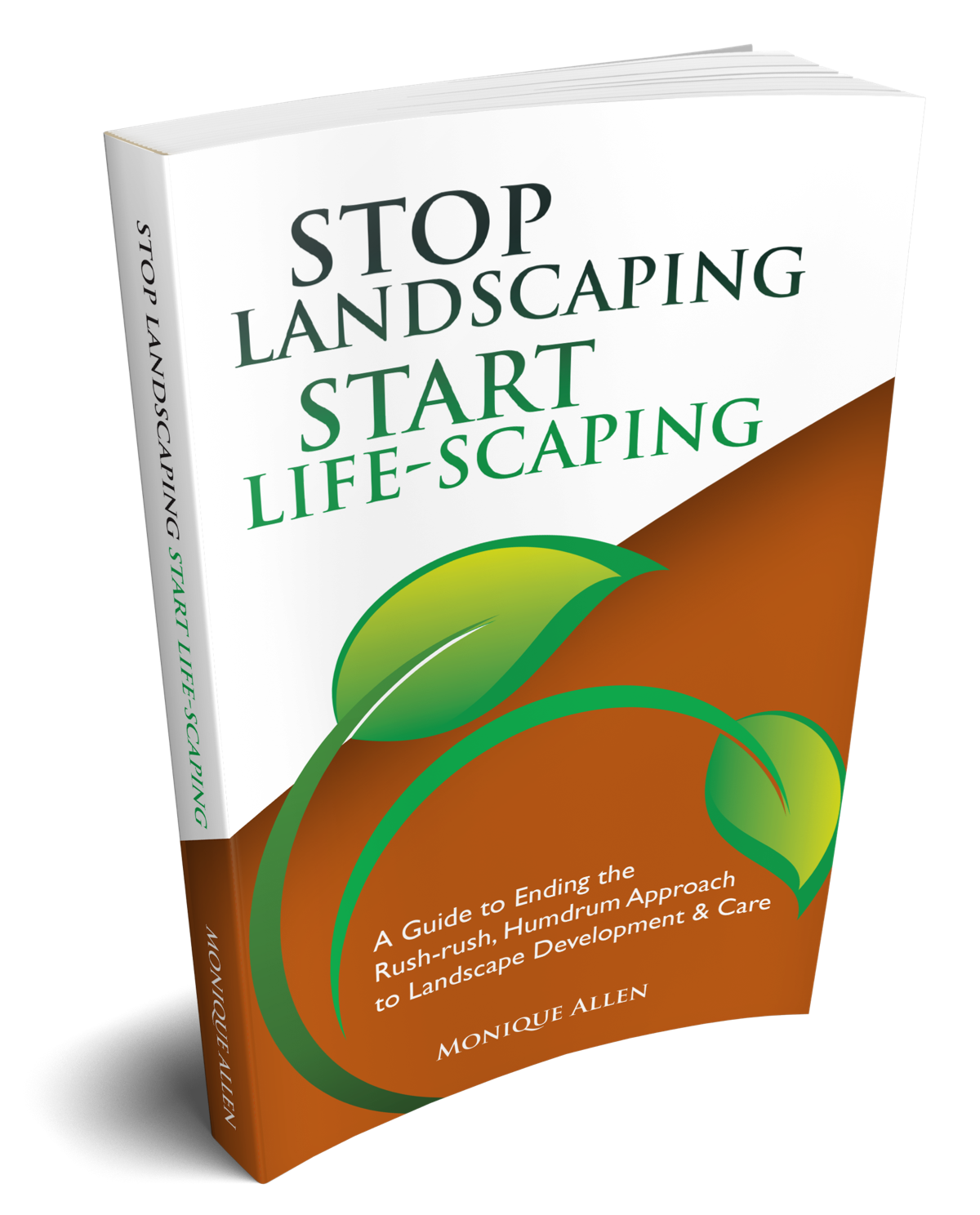I get asked on a regular basis by people far and wide to design a Life-Scape for them. That’s a term I use to refer to a more integrated landscape design based on the land itself, the environment in which it exists, and how the property owner wishes to utilize it in a positive way.
Unfortunately, I am limited to my local area and it is hard to travel so I cannot fulfill these requests. Consequently, many ask me to recommend other designers to create a landscape for them with my Life-Scape approach. That’s another request that I cannot satisfy because I come up short identifying landscaping professionals who approach landscape design and construction the way I do. The only reasonable answer was to write a book about this method.
For over three decades I have been intimately involved in landscape design, maintenance, and management. During those many years, I have learned an enormous amount about how to design, build and maintain landscapes from both formal training and in-field experience. I feel blessed that all of this has helped me gain a solid business reputation with satisfied clients and a certain amount of visibility in the industry.
 While I do not think that my way is the only way to do things, it has worked well for me, my team, and my clients. It occurred to me that, after spending my entire adult life this far in the landscaping business, perhaps I should codify my way of working and share it with people who have a genuine interest in it. Hence, the book. If it helps property owners and professionals, then I’m happy.
While I do not think that my way is the only way to do things, it has worked well for me, my team, and my clients. It occurred to me that, after spending my entire adult life this far in the landscaping business, perhaps I should codify my way of working and share it with people who have a genuine interest in it. Hence, the book. If it helps property owners and professionals, then I’m happy.
When I started thinking seriously about the book, I realized that much of what I do is done intuitively, based on all these years of experience. The more I’ve come to understand people and landscapes, the more I realized that I approach a piece of land and a project instinctively.
However, just because you know how to do something doesn’t mean you can teach someone to do it. So when I started to write the book five years ago, I had to observe what I did and how I did it and then go to my computer and document it. That was an eye-opening experience.
Buy the book titled "Stop Landscaping, Start Life-Scaping" now!
De-stressing the creative process
Once I began actively observing my behavior and approach and started documenting it, I found myself asking, “Why do I do that?” The more I observed, the more curious I became about why I did certain things a certain way. Without even thinking about it, I began to refine what I was doing. For example, I would notice what I would say to a client about the creative process and then write it down. I discovered that even though the creative process was easy for me, it was terrifying for clients. To help them feel more comfortable with the creative process, I asked them to “dare to dream.” This was a way to help them relax, let their ideas run free, and get comfortable in getting creative. That’s why one of the chapters in the book is titled “Dare to Dream.”
Looking is not the same as seeing.
Another revelation that came with this project was how much “rush” goes on in the landscape industry. I found that many people simply don’t take the time to analyze their projects more carefully and actually see what they entail; to understand that landscape development is a long game and not just a quick one-and-done. In fact, there is so much angst swirling around landscape projects and the desire to just get them done that people don’t develop a clear understanding of their land and resources and how they are affected by time and money. They fail to see the need to combine those elements in a thoughtful, informed way to achieve the best possible outcome for their project.
This is the reason why I subtitled the book, A guide to ending the rush-rush, humdrum approach to landscape development and care. I even included two chapters, “See Your Setting” and “Picture Your Plan” that take a deep dive into the importance of taking a long, slow look at your resources and really see how to use them to turn your dream into reality. Many landscape projects fail because people, including some professionals, skip the analysis and planning part and simply buy plants that appeal to them, only to struggle with what to do with them once they get them home. The landscape construction process needs to be approached in a systematic, logical way with a specific goal in mind. That’s why there’s a whole chapter in the book called “Build It” that is devoted to the details of proper landscape construction.

TWEETABLE TIP
The landscape construction process needs to be approached in a systematic, logical way with a specific goal in mind.
VIA @GardenContinuum

Demystifying landscape design and planning
The whole purpose of writing this book was to outline my systematic approach to undertaking a landscape project. I wanted to demystify the process of designing and planning so people can get a significant head-start on their projects before they even stick a shovel in the ground. Following my system will enable the reader to actually enjoy the landscape construction part because they will have eliminated the stumbling blocks that can trip up even the best-intentioned plans. As someone armed with this kind of proven knowledge, you’ll be able to start your next outdoor project confident in the entire process -- from planning and resources to budgeting and scheduling. My hope is that my book will give people the same confidence in the Life-Scape approach that I have.








Leave a comment